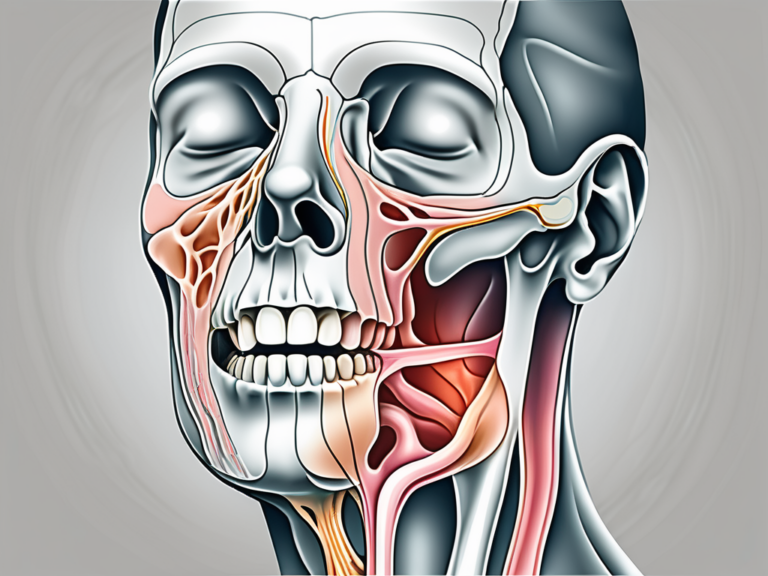Understanding Vasovagal Syncope: Causes, Symptoms, and Treatment
Vasovagal syncope, also known as vasovagal fainting or neurocardiogenic syncope, is a common type of fainting spell that occurs when your body overreacts to certain triggers. It is important to understand the causes, symptoms, and treatment options for this condition in order to effectively manage and cope with it.
What is Vasovagal Syncope?
Vasovagal syncope is a temporary loss of consciousness that occurs when there is a sudden drop in blood pressure and heart rate. It is often triggered by a combination of physiological and emotional factors. While the exact cause of vasovagal syncope is unknown, it is believed to be a result of an overstimulation of the vagus nerve.
The Role of the Vagus Nerve
The vagus nerve is one of the largest nerves in the body, responsible for regulating various bodily functions such as heart rate and blood pressure. In the case of vasovagal syncope, the vagus nerve is overly sensitive and can be triggered by certain stimuli, leading to a vasovagal response.
Vasovagal Syncope vs. Common Fainting
Vasovagal syncope is often misunderstood and misinterpreted as common fainting. While both conditions involve a temporary loss of consciousness, they have distinct differences. Common fainting, or syncope, typically occurs due to a sudden decrease in blood flow to the brain, while vasovagal syncope is specifically triggered by the vagus nerve.
It is important to note that vasovagal syncope can be a frightening experience for those who suffer from it, as the sudden loss of consciousness can be alarming. Individuals experiencing vasovagal syncope may exhibit symptoms such as dizziness, nausea, and a pale complexion before losing consciousness.
Managing Vasovagal Syncope
For individuals prone to vasovagal syncope, there are strategies that can help manage and prevent episodes. These may include staying well-hydrated, avoiding triggers such as prolonged standing or extreme emotional stress, and practicing techniques to increase blood flow, such as tensing the muscles in the legs and abdomen.
Identifying the Causes of Vasovagal Syncope
In order to effectively manage vasovagal syncope, it is important to identify and understand its underlying causes. There are several factors that can trigger a vasovagal episode, including biological, emotional, and psychological triggers.
Vasovagal syncope, also known as neurocardiogenic syncope, is a common cause of fainting episodes. It occurs when there is a sudden drop in heart rate and blood pressure, leading to a temporary loss of consciousness. Understanding the triggers of vasovagal syncope is crucial in preventing future episodes and managing the condition effectively.
Biological Triggers
Biological triggers refer to physical stimuli that can initiate a vasovagal response. These triggers can include standing for long periods, sudden changes in posture, hot or crowded environments, pain, dehydration, and even certain medications. For example, some blood pressure medications can exacerbate vasovagal syncope by further lowering blood pressure. Recognizing and avoiding these triggers can significantly reduce the risk of fainting episodes.
In addition to external factors, internal biological processes can also play a role in triggering vasovagal syncope. Issues such as dehydration, low blood sugar levels, and heart conditions can increase the likelihood of experiencing a vasovagal episode. It is important for individuals with a history of syncope to stay hydrated, maintain stable blood sugar levels, and undergo regular cardiac evaluations to manage these biological triggers effectively.
Emotional and Psychological Factors
Emotional and psychological factors can also contribute to the occurrence of vasovagal syncope. Stress, anxiety, fear, and even the sight of blood or needles can trigger a vasovagal response in susceptible individuals. These triggers can activate the body’s “fight or flight” response, leading to a sudden drop in blood pressure and fainting. Developing stress management techniques, seeking therapy for anxiety disorders, and desensitization therapy for specific triggers can help individuals better cope with these emotional and psychological factors.
Furthermore, the brain-heart connection plays a significant role in vasovagal syncope. The vagus nerve, which regulates heart rate and blood pressure, can be overly sensitive in some individuals, leading to exaggerated responses to certain triggers. Understanding this mind-body connection is essential in developing personalized treatment plans for individuals with vasovagal syncope.
Recognizing the Symptoms of Vasovagal Syncope
The symptoms of vasovagal syncope can vary from person to person but generally follow a predictable pattern. Understanding these symptoms can help individuals and their loved ones recognize and respond to a vasovagal episode.
Vasovagal syncope, also known as neurocardiogenic syncope, is a common cause of fainting episodes. It occurs when there is a sudden drop in heart rate and blood pressure, leading to a temporary loss of blood flow to the brain. While the exact cause of vasovagal syncope can vary, triggers such as emotional stress, pain, dehydration, or standing for long periods are commonly reported.
Pre-Syncope Indicators
Pre-syncope refers to the period preceding a vasovagal episode, where individuals experience warning signs that fainting may occur. These can include sensations of lightheadedness, dizziness, nausea, pale skin, and a sudden cold sweat. Recognizing these indicators can provide individuals with an opportunity to take preventive measures.
It is essential for individuals prone to vasovagal syncope to stay hydrated, avoid triggers, and practice techniques like deep breathing or tensing the muscles to help prevent fainting episodes. Seeking medical advice to identify underlying causes or potential treatment options is also crucial for managing vasovagal syncope effectively.
During a Vasovagal Episode
During a vasovagal episode, individuals typically experience a sudden loss of consciousness, lasting only a few seconds to a few minutes. This is often followed by a period of confusion and disorientation. Understanding the sequence of events during an episode can help individuals and their loved ones provide appropriate care and support.
It is important for bystanders to ensure the safety of the individual experiencing a vasovagal episode by gently guiding them to a lying or sitting position to prevent injury from falling. Placing a cool compress on their forehead, loosening any tight clothing, and providing reassurance can also help in the recovery process. Monitoring the individual closely until they fully regain consciousness is essential to ensure their well-being.
Diagnosing Vasovagal Syncope
Diagnosing vasovagal syncope involves a thorough medical history review, physical examination, and specialized tests. Proper diagnosis is crucial to rule out other potential underlying causes of syncope and to develop an appropriate treatment plan.
When experiencing vasovagal syncope, it is essential to understand the intricate process that leads to this condition. Vasovagal syncope occurs when there is a sudden drop in blood pressure and heart rate, leading to a temporary loss of consciousness. This can be triggered by various factors such as emotional stress, dehydration, or prolonged standing.
Medical History and Physical Examination
When seeking medical attention for vasovagal syncope, healthcare professionals will first review your medical history to identify any potential risk factors or underlying conditions. They will also perform a thorough physical examination to rule out any other potential causes of syncope.
During the physical examination, healthcare providers will pay close attention to your heart rate, blood pressure, and overall cardiovascular health. They may also inquire about your lifestyle habits, including exercise routines, dietary patterns, and stress levels, to gain a comprehensive understanding of your overall health.
Specialized Tests for Vasovagal Syncope
In some cases, healthcare professionals may recommend specialized tests to further investigate and confirm a diagnosis of vasovagal syncope. These tests can include tilt table testing, electrocardiogram (ECG) monitoring, and in rare cases, implantable loop recorders. These tests provide valuable information to guide treatment options.
Tilt table testing involves monitoring your heart rate and blood pressure while lying flat on a table that is then tilted to simulate standing up. This test helps healthcare providers observe how your body reacts to changes in position, which can be crucial in diagnosing vasovagal syncope. Additionally, an electrocardiogram (ECG) can provide detailed information about your heart’s electrical activity, helping to identify any abnormalities that may contribute to syncope episodes.
Treatment Options for Vasovagal Syncope
While there is no cure for vasovagal syncope, it can be effectively managed through a combination of lifestyle changes, home remedies, medications, therapies, and, in severe cases, surgical interventions. Treatment plans are tailored to the individual’s specific triggers, symptoms, and overall health.
Lifestyle Changes and Home Remedies
Lifestyle modifications play a significant role in managing vasovagal syncope. These can include maintaining proper hydration, avoiding triggers, regular exercise, adequate sleep, and managing stress levels. For instance, staying well-hydrated helps to ensure that blood volume is optimized, reducing the likelihood of a vasovagal episode. Avoiding triggers such as prolonged standing or exposure to extreme temperatures can also help prevent syncope episodes. Incorporating regular exercise into one’s routine not only improves cardiovascular health but also helps to regulate blood pressure, reducing the risk of syncope. Furthermore, adequate sleep is crucial for overall well-being and can contribute to better autonomic nervous system function. Managing stress levels through relaxation techniques or engaging in hobbies can also have a positive impact on vasovagal syncope management.
In addition to lifestyle changes, certain home remedies can provide relief for individuals with vasovagal syncope. Applying cold compresses to the face or neck during an episode can help stimulate the body’s natural response to increase blood flow to the brain, minimizing the severity of the syncope. Moreover, performing specific maneuvers, such as leg crossing and tensing the leg muscles, can help prevent or interrupt an episode by increasing peripheral vascular resistance and maintaining blood pressure.
Medications and Therapies
In some cases, healthcare professionals may prescribe medications to individuals with recurrent and severe vasovagal syncope. These medications work by improving blood circulation and regulating heart rate. Beta-blockers, for example, can help reduce the heart’s response to triggers, preventing sudden drops in blood pressure. Other medications, such as fludrocortisone, can increase blood volume by promoting sodium and water retention. These pharmacological interventions can be a valuable addition to lifestyle changes, providing individuals with better control over their symptoms.
Additionally, certain therapies can help individuals develop effective coping strategies for managing triggers and stressors associated with vasovagal syncope. Biofeedback, for instance, allows individuals to gain better control over their autonomic responses by providing real-time feedback on physiological parameters such as heart rate and blood pressure. This technique can help individuals recognize early signs of an impending syncope episode and employ relaxation techniques to prevent it. Cognitive-behavioral therapy, on the other hand, focuses on identifying and modifying negative thought patterns and behaviors that may contribute to syncope episodes. By addressing underlying psychological factors, individuals can learn to manage stress and anxiety more effectively, reducing the frequency and severity of vasovagal episodes.
Surgical Interventions
In rare cases, when lifestyle changes and medications fail to effectively manage vasovagal syncope, surgical interventions may be considered. These interventions are typically reserved for individuals with severe and debilitating symptoms that significantly impact their quality of life. One such intervention is pacemaker implantation, which involves the insertion of a small device under the skin that helps regulate heart rate and rhythm. By constantly monitoring the heart’s electrical activity, the pacemaker can detect abnormal rhythms and deliver electrical impulses to restore normal heart function. Another surgical option is surgery to modulate the vagus nerve, which plays a crucial role in regulating heart rate and blood pressure. This procedure aims to disrupt the abnormal signaling between the brain and the heart, reducing the frequency and severity of syncope episodes.
It is important to note that surgical interventions are considered a last resort and are only recommended after careful evaluation and discussion with a healthcare professional. The potential risks and benefits of these procedures should be thoroughly assessed, taking into consideration the individual’s specific circumstances and medical history.
Living with Vasovagal Syncope
Living with vasovagal syncope can be challenging, but with proper management and support, individuals can lead fulfilling lives. Coping strategies, adjustments to lifestyle, and regular communication with healthcare professionals are essential for managing the condition effectively.
When it comes to coping strategies, individuals with vasovagal syncope often find relief in various relaxation techniques such as deep breathing exercises, meditation, or yoga. These practices can help reduce stress and anxiety, which are common triggers for syncope episodes. Moreover, joining support groups or seeking counseling can provide emotional support and practical advice for navigating the challenges associated with this condition.
Coping Strategies
Developing coping strategies is crucial for individuals with vasovagal syncope. These can include learning relaxation techniques, recognizing and avoiding triggers, and having a support system in place. Additionally, keeping a journal to track symptoms and triggers can provide valuable insights for managing the condition.
Furthermore, making lifestyle adjustments can significantly impact the frequency and severity of vasovagal syncope episodes. Simple changes such as staying well-hydrated, maintaining a balanced diet, and avoiding sudden movements or prolonged standing can help minimize the risk of fainting spells. It is also important to prioritize regular sleep patterns and stress management techniques to promote overall well-being.
Long-Term Prognosis and Quality of Life
In most cases, vasovagal syncope does not pose any serious health risks and individuals can live a normal life. However, it is important to regularly follow up with healthcare professionals, attend scheduled appointments, and maintain open communication to ensure the condition is effectively managed. With proper care, individuals can enjoy an improved quality of life.
Moreover, staying informed about the latest research and treatment options for vasovagal syncope can empower individuals to make informed decisions about their healthcare. Engaging in regular physical activity, under the guidance of a healthcare provider, can also improve cardiovascular health and reduce the likelihood of syncope episodes. By taking a proactive approach to managing vasovagal syncope, individuals can enhance their overall well-being and quality of life.
In conclusion, understanding the causes, symptoms, and treatment options for vasovagal syncope is crucial for individuals dealing with this condition. By recognizing triggers, implementing lifestyle changes, and utilizing appropriate treatment modalities, individuals can effectively manage vasovagal syncope and live a fulfilling life.






